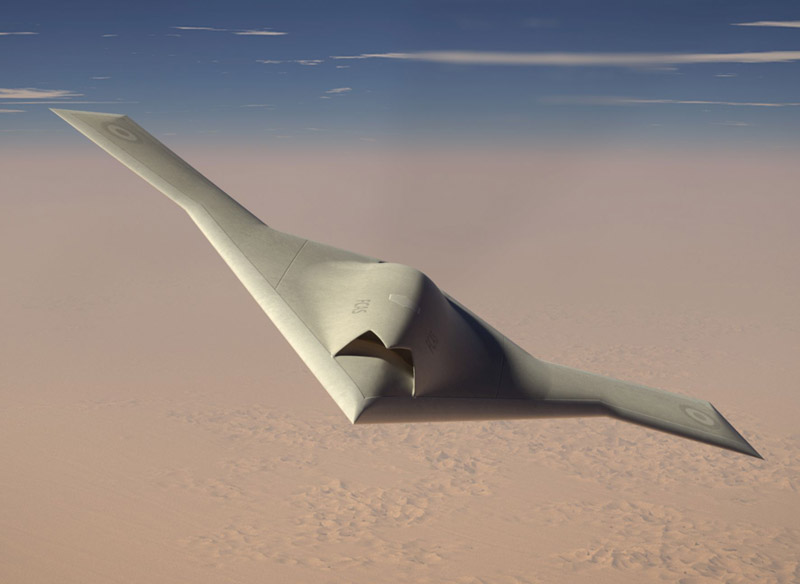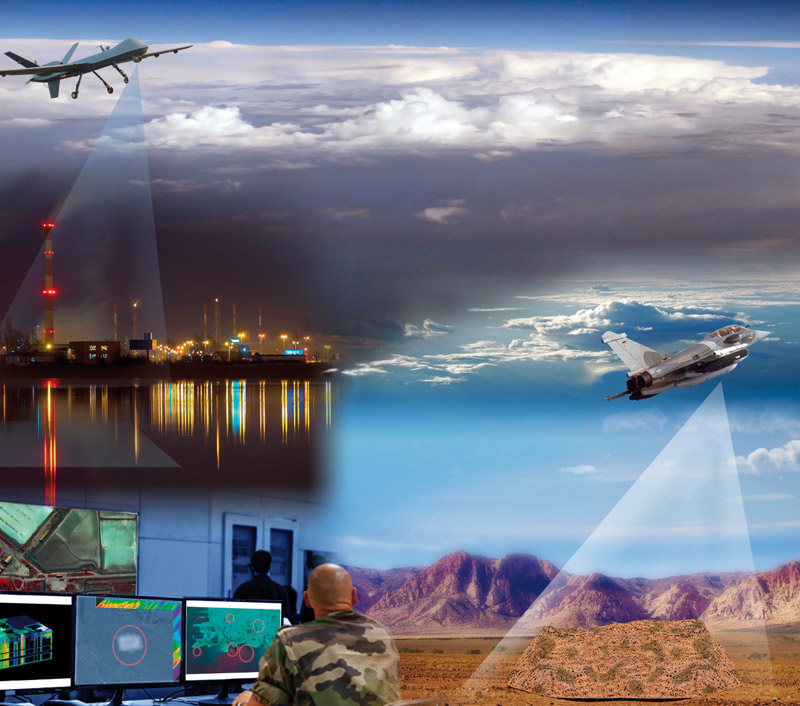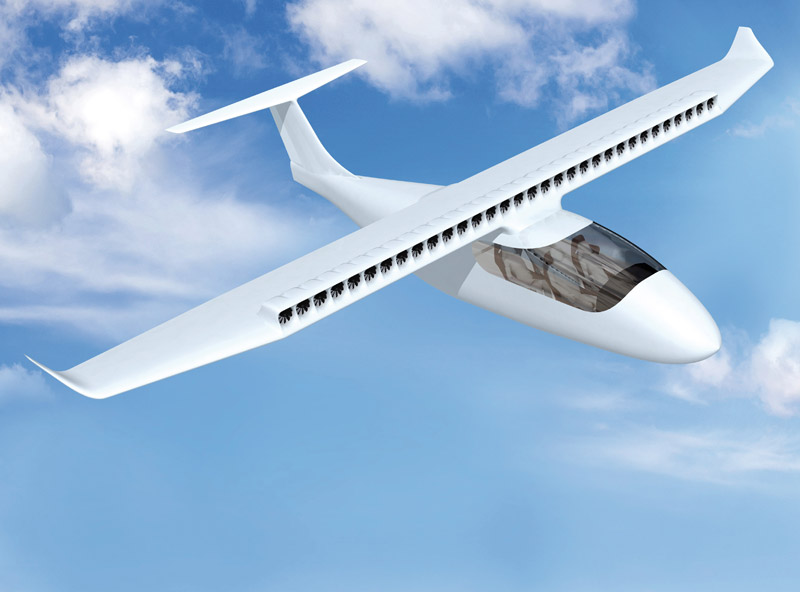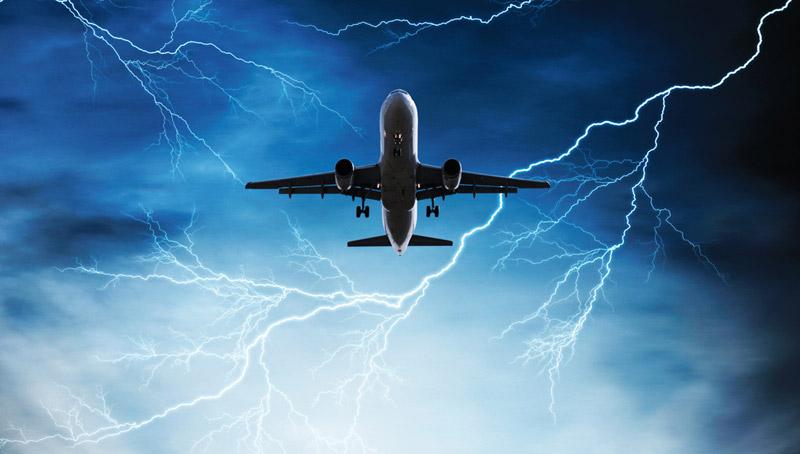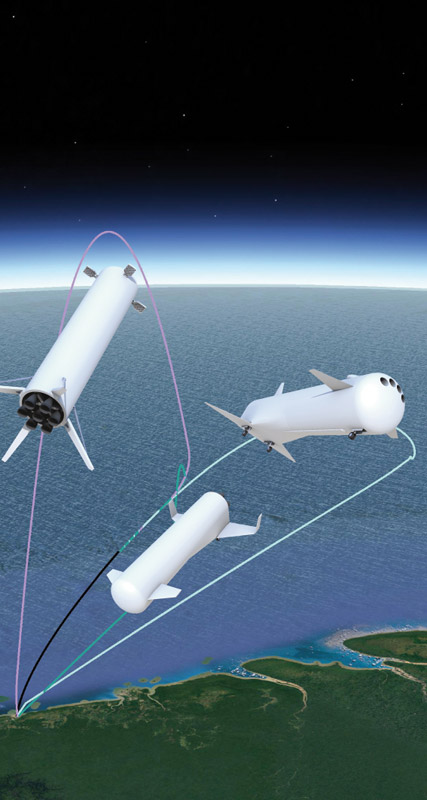ONERA welcomes you to its stand at the Paris Air Show!
The 2017 edition of the International Aeronautics and Space Exhibition starts today. Up until Sunday, June 25, ONERA will be showcasing its work, through its institutional stand located in Hall 2A, Module C271.
Driven by the message "Inventing together the future of aerospace", technological breakthroughs, projects and skills will be exhibited along ONERA's three new program lines: defense, aeronautics and space.
Defense
ONERA for the FCAS program: the future of combat aviation
FCAS, the Future Combat Air System, is a French-British cooperation program. The challenge is to develop a stealth combat drone capable, by 2030, of carrying out observation and surveillance missions, identifying targets and carrying out strikes in hostile territory. A feasibility study phase, initiated in 2014, is currently underway up until the end of 2017.
Although national specificities may still exist, the project envisages a common architecture for the platform, propulsion and the concept of use. The main technological challenges are decision-making autonomy in the management of the platform and stealth, whose high level requirements impose strong constraints in the electromagnetic and infrared domains.
Under the supervision of the Ministry of Armed Forces and as a state expert for the DGA, ONERA partners with top ranking French industries:
- with Dassault Aviation for the platform and the system approach,
- with Snecma for the engines,
- and with Thales for the sensors.
If you are interested in the FCAS and in ONERA’s contribution, come and meet our experts!
ONERA with the DGA: airborne remote sensing, a key skill
Remote sensing by hyper-spectral imaging is used to identify anomalies in a military theater, such as a tank under vegetation cover, or to detect targets hidden by camouflage. The spectral classification of areas of interest makes it possible to better prepare targeting operations.
The Sysiphe airborne technological demonstrator, developed by ONERA, can obtain, at an altitude of 2,000 meters, images with 500m swath and a resolution of 50cm, in more than 600 spectral bands, from the visible part of the spectrum to the thermal infrared. The use of the data enables the assessment of the interest of hyper-spectral imagery for military intelligence needs, as well as the preparation of future imaging capacities.
ONERA has also equipped itself with a new generation radar and optronic imaging system, the experimental microwave remote sensing imaging system RAMSES NG / SETHI (Système Expérimental de Télédétection Hyperfréquence Imageur). Airborne radar imagery consists in producing images of the ground from radar signals. The various sensors are integrated into a FALCON 20 aircraft. One of the objectives is to supply a DGA database, in order to assist in the specification of future operational systems.
- For more information about Sysiphe
- For more information about Ramses NG / Sethi
- For more information about Busard
Aeronautics
AMPERE, the challenge of distributed electric propulsion
AMPERE (Avion à Motorisation réPartie Électrique de Recherche Expérimentale) is a regional distributed electric propulsion demonstrator aircraft for transporting 4 to 6 people over a distance of 500 km in 2 hours. The objective of the AMPERE project is to bring the technology of distributed electric propulsion to maturity and transfer it to the industry.
Up to now, two types of study have been carried out:
- The numerical design of the distributed propulsion engine integration and its wing blowing effect.
- The validation of the aerodynamic performance prediction calculations on a motorized wind tunnel model with 32 fans in the ONERA L2 wind tunnel in Lille.
This model will be exhibited on ONERA’s stand at a scale of 1/5th of the prototype. Do not miss the opportunity to discover it.
ONERA with the DGAC: improving knowledge of the physical phenomena involved in airworthiness and risk reduction
ONERA is an expert in the study of complex physical phenomena, such as icing, lightning, fire and wake vortices, as well as structure resistance and embedded software.
They play a key role in the certification process. In order to meet the challenges associated with the considerable increase in air traffic expected in the coming years, or the increasing use of composite materials, ONERA will assist the DGAC through research agreements, deepening knowledge of these various phenomena and modeling them.
If you are interested in this research, come and meet our experts!
- For more information about PHYFIRE
- For more information about PHYLIGHT
- For more information about PHYLOG
- For more information about PHYSAFE
- For more information about PHYSICE
- For more information about PHYWAKE
Space: Reusable launchers for Europe with CNES
ONERA is assisting the CNES in preparing the next generation of heavy conventional launchers. The challenge for the space industry, in view of the proliferation of satellite constellation projects, is to reduce start-up costs. This new generation will certainly include a recoverable and reusable part.
Reuse contributes to the development of new technologies; for example, controlling the trajectory involves the automation of the autopilot, in a way similar to that of drones. The projects, developed in collaboration with the CNES, will be able to be applied to systems developed within the framework of programs led by the CNES and the industrialists.
ONERA is studying the heavy launchers used to place satellites of several tons into geostationary orbit. Come and discover three reusable launcher solutions on its stand, each configuration requiring the mastery of complex and specific physical phenomena.
